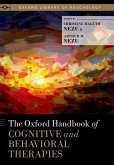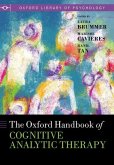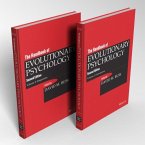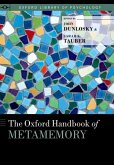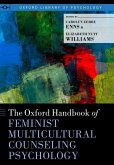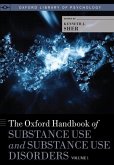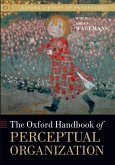- Gebundenes Buch
- Merkliste
- Auf die Merkliste
- Bewerten Bewerten
- Teilen
- Produkt teilen
- Produkterinnerung
- Produkterinnerung
This book showcases the theories, methods, and accomplishments of archaeologists who investigate the human mind through material forms. It encompasses the wide spectrum of cognitive archeology, showcasing contributions from scholars globally. It delivers analysis of material culture, from stone tools to ceramic and rock art of the past millennium.
Andere Kunden interessierten sich auch für
![The Oxford Handbook of Cognitive and Behavioral Therapies The Oxford Handbook of Cognitive and Behavioral Therapies]() The Oxford Handbook of Cognitive and Behavioral Therapies251,99 €
The Oxford Handbook of Cognitive and Behavioral Therapies251,99 €![The Oxford Handbook of Cognitive Analytic Therapy The Oxford Handbook of Cognitive Analytic Therapy]() Laura BrummerThe Oxford Handbook of Cognitive Analytic Therapy193,99 €
Laura BrummerThe Oxford Handbook of Cognitive Analytic Therapy193,99 €![The Handbook of Evolutionary Psychology, 2 Volume Set The Handbook of Evolutionary Psychology, 2 Volume Set]() The Handbook of Evolutionary Psychology, 2 Volume Set443,99 €
The Handbook of Evolutionary Psychology, 2 Volume Set443,99 €![The Oxford Handbook of Metamemory The Oxford Handbook of Metamemory]() The Oxford Handbook of Metamemory251,99 €
The Oxford Handbook of Metamemory251,99 €![The Oxford Handbook of Feminist Multicultural Counseling Psychology The Oxford Handbook of Feminist Multicultural Counseling Psychology]() The Oxford Handbook of Feminist Multicultural Counseling Psychology286,99 €
The Oxford Handbook of Feminist Multicultural Counseling Psychology286,99 €![The Oxford Handbook of Substance Use and Substance Use Disorders The Oxford Handbook of Substance Use and Substance Use Disorders]() The Oxford Handbook of Substance Use and Substance Use Disorders251,99 €
The Oxford Handbook of Substance Use and Substance Use Disorders251,99 €![The Oxford Handbook of Perceptual Organization The Oxford Handbook of Perceptual Organization]() The Oxford Handbook of Perceptual Organization234,99 €
The Oxford Handbook of Perceptual Organization234,99 €-
-
-
This book showcases the theories, methods, and accomplishments of archaeologists who investigate the human mind through material forms. It encompasses the wide spectrum of cognitive archeology, showcasing contributions from scholars globally. It delivers analysis of material culture, from stone tools to ceramic and rock art of the past millennium.
Hinweis: Dieser Artikel kann nur an eine deutsche Lieferadresse ausgeliefert werden.
Hinweis: Dieser Artikel kann nur an eine deutsche Lieferadresse ausgeliefert werden.
Produktdetails
- Produktdetails
- Verlag: Oxford University Press
- Seitenzahl: 1328
- Erscheinungstermin: 27. Juni 2024
- Englisch
- Abmessung: 251mm x 178mm x 63mm
- Gewicht: 2438g
- ISBN-13: 9780192895950
- ISBN-10: 0192895958
- Artikelnr.: 69191044
- Herstellerkennzeichnung
- Libri GmbH
- Europaallee 1
- 36244 Bad Hersfeld
- gpsr@libri.de
- Verlag: Oxford University Press
- Seitenzahl: 1328
- Erscheinungstermin: 27. Juni 2024
- Englisch
- Abmessung: 251mm x 178mm x 63mm
- Gewicht: 2438g
- ISBN-13: 9780192895950
- ISBN-10: 0192895958
- Artikelnr.: 69191044
- Herstellerkennzeichnung
- Libri GmbH
- Europaallee 1
- 36244 Bad Hersfeld
- gpsr@libri.de
Thomas Wynn is Distinguished Professor of Anthropology at the University of Colorado, Colorado Springs, where he has taught since 1977. He earned his PhD in Anthropology at the University of Illinois, Urbana. His training was in the archaeology of the Lower Palaeolithic (early Stone Age). His doctoral research opened a hitherto unexplored direction in Palaeolithic studies - the explicit use of psychological theory to interpret archaeological remains. He has published extensively in Palaeolithic studies (150+ articles and book chapters), with a particular emphasis on cognitive evolution. Karenleigh A. Overmann earned her doctorate in archaeology from the University of Oxford as a Clarendon scholar in 2016. In June 2020, she completed two years of postdoctoral research at the University of Bergen (MSCA individual fellowship, EU project 785793), and she was a visiting scholar at the University of Pittsburgh from Sept. 2020 to June 2021. She is currently an associate professor of anthropology (adjunct) and co-director of the Center for Cognitive Archaeology at the University of Colorado, Colorado Springs. Frederick L. Coolidge has a BA, MA, and PhD in Psychology from the University of Florida (UF) and completed a 2-year Postdoctoral Fellowship in Clinical Neuropsychology at UF. He worked as Forensic Psychologist at the South Florida State Mental Hospital before beginning his academic career at the University of Colorado, Colorado Springs (UCCS). He has received three Fulbright Fellowships to India (1987, 1992, 2005) and in 2015 was appointed Senior Visiting Scholar at Oxford University (Keble College). He received the annual UCCS research award, three UCCS teaching awards and awarded the title University of Colorado Presidential Teaching Scholar.
* 1: The archaeology of mind-Past, present, and future
* 2: Ideas of cognitive evolution in the making
* 3: Rock art and cognitive archaeology: A personal Southern African
journey
* 4: Redescribing the Oldowan
* 5: Insights into the cognitive abilities of Oldowan and Acheulean
hominins: Experimental approaches
* 6: The expert Neandertal mind and brain, revisited
* 7: What is cognitive archaeology? The material engagement approach
* 8: From technical reasoning to cumulative technological culture
* 9: Evolutionary neuroarchaeology
* 10: More than the sum of their parts? Networks as methods and as
heuristics in cognitive archaeology
* 11: Towards an ecology of evolving skills
* 12: The evolution of human causal cognition
* 13: On the problem of the interpretation of symbols and symbolism in
archaeology
* 14: Investigating cognitive abilities of early humans: The Windows
Approach
* 15: Thinking, for example in and about the past: Approaches to
ideational cognitive archaeology
* 16: Methods in neuroarchaeology
* 17: Experimental archaeology enables inferences about human cognition
* 18: Prehistoric numeracy: Approaches, assumptions, and issues
* 19: Systematically reconstructing behavioral architectures as a basis
for cognitive archaeology
* 20: Tool use by New Caledonian crows can inform cognitive
archaeology: A case study using Observational Action Coding
* 21: A Pleistocene record of making symbols
* 22: The cultural ecology of fear: Human funerary cognition in
evolutionary perspective
* 23: Current conceptions of human cognition in understanding the
origins of human art
* 24: The relevance of geometry to understanding human evolution from
the perspective of cognitive domains and the Neurovisual Resonance
Theory
* 25: The deep history of musicality: Evolutionary cognitive
archaeology and music
* 26: The neuro-archaeology of language origins
* 27: Where are the children? Archaeological evidence of children in
the hunter-gatherer societies of the Upper European Paleolithic
* 2: Ideas of cognitive evolution in the making
* 3: Rock art and cognitive archaeology: A personal Southern African
journey
* 4: Redescribing the Oldowan
* 5: Insights into the cognitive abilities of Oldowan and Acheulean
hominins: Experimental approaches
* 6: The expert Neandertal mind and brain, revisited
* 7: What is cognitive archaeology? The material engagement approach
* 8: From technical reasoning to cumulative technological culture
* 9: Evolutionary neuroarchaeology
* 10: More than the sum of their parts? Networks as methods and as
heuristics in cognitive archaeology
* 11: Towards an ecology of evolving skills
* 12: The evolution of human causal cognition
* 13: On the problem of the interpretation of symbols and symbolism in
archaeology
* 14: Investigating cognitive abilities of early humans: The Windows
Approach
* 15: Thinking, for example in and about the past: Approaches to
ideational cognitive archaeology
* 16: Methods in neuroarchaeology
* 17: Experimental archaeology enables inferences about human cognition
* 18: Prehistoric numeracy: Approaches, assumptions, and issues
* 19: Systematically reconstructing behavioral architectures as a basis
for cognitive archaeology
* 20: Tool use by New Caledonian crows can inform cognitive
archaeology: A case study using Observational Action Coding
* 21: A Pleistocene record of making symbols
* 22: The cultural ecology of fear: Human funerary cognition in
evolutionary perspective
* 23: Current conceptions of human cognition in understanding the
origins of human art
* 24: The relevance of geometry to understanding human evolution from
the perspective of cognitive domains and the Neurovisual Resonance
Theory
* 25: The deep history of musicality: Evolutionary cognitive
archaeology and music
* 26: The neuro-archaeology of language origins
* 27: Where are the children? Archaeological evidence of children in
the hunter-gatherer societies of the Upper European Paleolithic
* 1: The archaeology of mind-Past, present, and future
* 2: Ideas of cognitive evolution in the making
* 3: Rock art and cognitive archaeology: A personal Southern African
journey
* 4: Redescribing the Oldowan
* 5: Insights into the cognitive abilities of Oldowan and Acheulean
hominins: Experimental approaches
* 6: The expert Neandertal mind and brain, revisited
* 7: What is cognitive archaeology? The material engagement approach
* 8: From technical reasoning to cumulative technological culture
* 9: Evolutionary neuroarchaeology
* 10: More than the sum of their parts? Networks as methods and as
heuristics in cognitive archaeology
* 11: Towards an ecology of evolving skills
* 12: The evolution of human causal cognition
* 13: On the problem of the interpretation of symbols and symbolism in
archaeology
* 14: Investigating cognitive abilities of early humans: The Windows
Approach
* 15: Thinking, for example in and about the past: Approaches to
ideational cognitive archaeology
* 16: Methods in neuroarchaeology
* 17: Experimental archaeology enables inferences about human cognition
* 18: Prehistoric numeracy: Approaches, assumptions, and issues
* 19: Systematically reconstructing behavioral architectures as a basis
for cognitive archaeology
* 20: Tool use by New Caledonian crows can inform cognitive
archaeology: A case study using Observational Action Coding
* 21: A Pleistocene record of making symbols
* 22: The cultural ecology of fear: Human funerary cognition in
evolutionary perspective
* 23: Current conceptions of human cognition in understanding the
origins of human art
* 24: The relevance of geometry to understanding human evolution from
the perspective of cognitive domains and the Neurovisual Resonance
Theory
* 25: The deep history of musicality: Evolutionary cognitive
archaeology and music
* 26: The neuro-archaeology of language origins
* 27: Where are the children? Archaeological evidence of children in
the hunter-gatherer societies of the Upper European Paleolithic
* 2: Ideas of cognitive evolution in the making
* 3: Rock art and cognitive archaeology: A personal Southern African
journey
* 4: Redescribing the Oldowan
* 5: Insights into the cognitive abilities of Oldowan and Acheulean
hominins: Experimental approaches
* 6: The expert Neandertal mind and brain, revisited
* 7: What is cognitive archaeology? The material engagement approach
* 8: From technical reasoning to cumulative technological culture
* 9: Evolutionary neuroarchaeology
* 10: More than the sum of their parts? Networks as methods and as
heuristics in cognitive archaeology
* 11: Towards an ecology of evolving skills
* 12: The evolution of human causal cognition
* 13: On the problem of the interpretation of symbols and symbolism in
archaeology
* 14: Investigating cognitive abilities of early humans: The Windows
Approach
* 15: Thinking, for example in and about the past: Approaches to
ideational cognitive archaeology
* 16: Methods in neuroarchaeology
* 17: Experimental archaeology enables inferences about human cognition
* 18: Prehistoric numeracy: Approaches, assumptions, and issues
* 19: Systematically reconstructing behavioral architectures as a basis
for cognitive archaeology
* 20: Tool use by New Caledonian crows can inform cognitive
archaeology: A case study using Observational Action Coding
* 21: A Pleistocene record of making symbols
* 22: The cultural ecology of fear: Human funerary cognition in
evolutionary perspective
* 23: Current conceptions of human cognition in understanding the
origins of human art
* 24: The relevance of geometry to understanding human evolution from
the perspective of cognitive domains and the Neurovisual Resonance
Theory
* 25: The deep history of musicality: Evolutionary cognitive
archaeology and music
* 26: The neuro-archaeology of language origins
* 27: Where are the children? Archaeological evidence of children in
the hunter-gatherer societies of the Upper European Paleolithic


